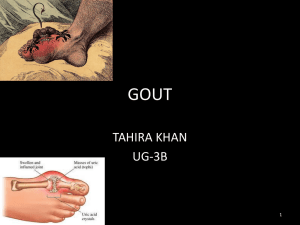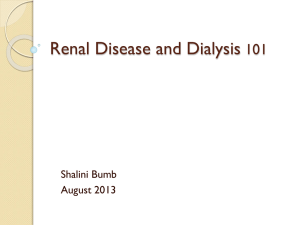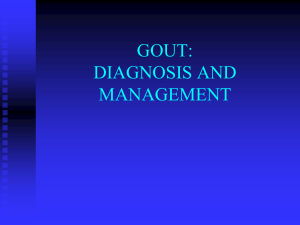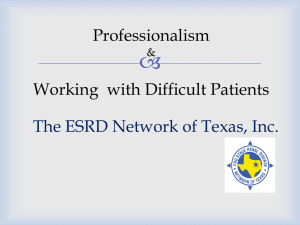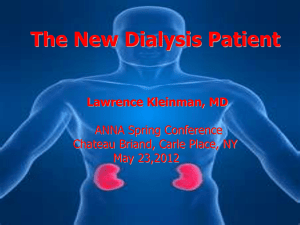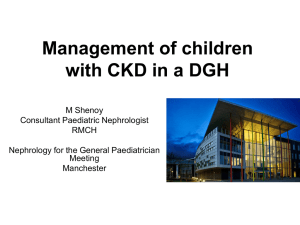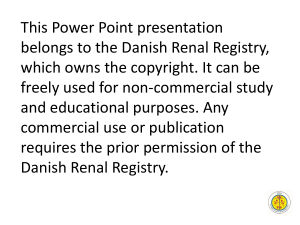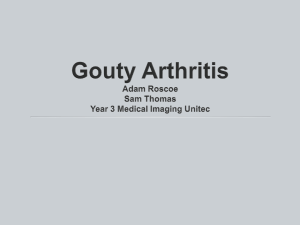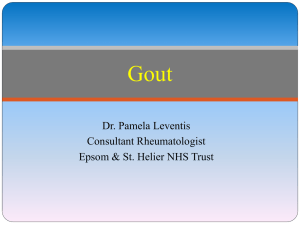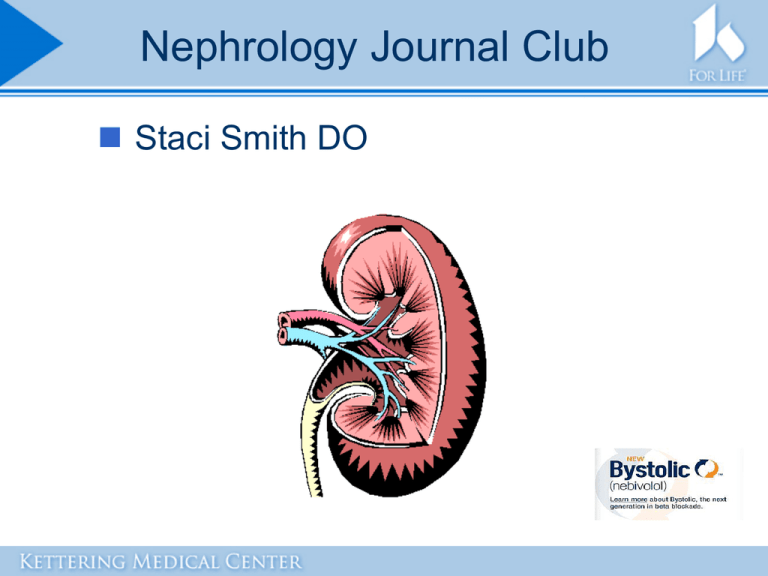
Nephrology Journal Club
Staci Smith DO
Introduction
The Cardiorenal Syndrome
Nontraditional CV risk factors in patients
with renal disease
Cardiovascular disease CVD is the leading
cause of death among patients with ESRD
Patients with ESRD have cardiovascular
mortality rates 10- to 20-fold higher than the
general population
Traditional CV Risk Factors
Age
Sex
Blood pressure
Dyslipidemia
Diabetes
Smoking
Risk Factors That Enhance CV Mortality
Disordered Mineral Metabolism
calcium and phosphorous (CaP) >55
significant increase in mortality
Pro-inflammatory state
links hsCRP to mortality
Anemia
Hb concentration as independent risk factor for
LVH
Dyslipidemia
Risk Factors That Enhance CV Mortality
Endothelial dysfunction
ESRD pts not able to make nitric oxide,
vasodilator
Risk Factors for CV Disease
American Journal of Kidney Diseases
Dual Blockage of the Renin-Angiotensin
System for Cardiorenal Protection: An
Update
Mustafa Arici, MD et al
February 2009 pp 332-345
Dual Blockage of the Renin-Angiotensin System for
Cardiorenal Protection: An Update
Major focus on
HTN control is
RAS cascade
Dual Blockage of the Renin-Angiotensin System for
Cardiorenal Protection: An Update
Advantages of ACEI ARB Advantages
Preserved Ang II-related
inhibition on renin release
Less AT2 receptor stimulation
Protective effect
AT1 blockade
Vasodilation- AT2 receptor
No aldosterone escape
Dual Blockage of the Renin-Angiotensin System for
Cardiorenal Protection: An Update
ACEI Disadvantages
Continued And II
production via non ACE
pathways
NO intrarenal ACE
inhibition
ARB Disadvantages
Elevated Ang II levels
Elevated renin levels
Drop in BP d/t
vasodilating effect of
AT2
Why do dual blockade?
Ang II escape phenomenon
Prevents total ACE inhibitor
Can occur after long term use of ACEI
Production of Ang II via non ACE path
Does not occur with ARB use
downstream pathway
Dual Blockade in Clinical Terms
Combination tx- only 4mm systolic bp and
3 mm diastolic drop in bp
ONTARGET
Ramipril 10mg daily plus Telmisartan 80mg
daily
Decreased 2.4/1.4 bp
Not enough evidence to use for bp
Dual Blockade in Clinical Terms
ONTARGET
Primary renal outcomes increased
Doubled creatnine
Acute Dialysis
Death
Proteinuria improved
Decreased micro to macroalbuminuria
Negative Outcomes in Dual Therapy
Valsartan Heart Failure Trial (Val-HeFT )
Subgroup analysis
Use with an ACEI inhibitor and Beta blocker yielded
negative results
CHARM
VALIANT
All reveal that dual therapy yields
Hyperkalemia, worsening renal failure,
hypotension
Current Evidence of Dual RAS Inhibition
Suggests that ACEI and ARBs are equal
ARBs are better tolerated
No perfect doses to achieve complete
blockade
Combination therapy leads to a greater bp
decrease
ONTARGET and VALIANT – no benefit
Conclusions
Until new safety data emerges
Wise to withhold use of combination therapy in
general practice, especially for “low risk” kidney
pts, elderly, high risk pts, or advanced kidney
disease
American Journal of Kidney Diseases
Is Angiotensin-Converting Enzyme Inhibitor and
Angiotensin Receptor Combination Therapy
Better Than Monotherapy and Safe in Patients
With CKD?
Vol 53, No 2. February 2009: pp 192-196
ACEI and ARB Combination
Safe in CKD ?
Close relationship in CKD progression and proteinuria
reduction in GFR over time
Synergistic effect of prolonged blockade of RAAS
dual or triple combination therapy
ONTARGET
randomized, double blind study
three comparison groups
telmisartan 80 mg daily
ramipril 10 mg daily
combination telmisartan and ramipril
ACEI and ARB Combination
Safe in CKD ?
Study Design of ONTARGET
25,620 participants
55 yo or older with DM, atherosclerosis, or associated
end organ damage
2.5 mg of ramipril for 3 days
followed by 2.5 mg of ramipril and 40 mg telmisartan for 7
days
both 40 mg telmisartan and 5mg ramipril
for 11-18 days
ACEI and ARB Combination
Safe in CKD ?
Primary Outcome
Death from CV diseases
MI
CVA
Heart failure hospitalization
Secondary Outcomes
included nephropathy
Follow up was for 56 months
ACEI and ARB Combination
Safe in CKD ?
Results
Mean bp was lower in both the telmisartan
group than the ramipril group
0.9/0.6 mm Hg greater reduction
Mean bp was lower in the combination-therapy
group than the ramipril group
a 2.4/1.4 mm Hg greater reduction
ACEI and ARB Combination
Safe in CKD ?
Conclusion:
Telmisartan was equivalent to ramipril in
patients with vascular disease or high-risk
diabetes.
The combination of the two drugs was
associated with more adverse events without
an increase in benefit.
ACEI and ARB Combination
Safe in CKD ?
Important Points
5.6% hyperkalemia ( K >5.5) with combination tx
3.3% hyperkalemia in monotherapy
Creatinine doubled in 2.1%-combination tx
Combination therapy showed no benefit
increased the risk of hypotension, syncope, renal
dysfunction, and hyperkalemia, with a trend toward an
increased risk of renal dysfunction requiring dialysis
Abandon dual therapy at the first sign of trouble
Journal of American Society of Nephrology
Association of Incident Gout and Mortality in
Dialysis Patients
J Am Soc Nephrol 19: 2204-2210, 2008.
Association of Incident Gout and Mortality
in Dialysis Patients
Introduction
gout as a marker for progression of CKD
associated with decreased patient survival
incidence of gout in ESRD pts may be low
Association of Incident Gout and Mortality
in Dialysis Patients
Risk factors for gout in general population
Hyperuricemia
Genetics
Obesity
Alcohol intake
Purine intake
Metabolic syndrome
Age
Male gender
HTN
Diuretics
CKD
Association of Incident Gout and Mortality
in Dialysis Patients
Independent risk factors for gout
African American race
Older age
BMI
Female gender
HTN
Ischemic heart disease
CHF
Alcohol use
Association of Incident Gout and Mortality
in Dialysis Patients
Lower risk for gout
DM
tobacco abuse
PVD
Association of Incident Gout and Mortality
in Dialysis Patients
Posttransplantation
Calcineurin inhibitors
Neoral (cyclosporine) – uric acid retention
Prograf (tacrolimus)
Azathioprine
Association of Incident Gout and Mortality
in Dialysis Patients
Results
Table 1 page 2207
Jan 1, 1999-Dec 31, 2003
Only 101 had gouty nephropathy as cause of ESRD
Excluded from study
5.4% gout incidence in first year of dialysis
11.5% by 3rd year
15.4% by 5th year
Association of Incident Gout and Mortality
in Dialysis Patients
Increasing Gout Incidence
Advanced age
AA population
Independently associated with mortality and
higher CV mortality
Association of Incident Gout and Mortality
in Dialysis Patients
Discussion
True amount of people that have renal dz and a
gout dx and start dialysis is unknown
5% incidence of ESRD pts with gout
After 1 yr on dialysis
Similar to that in general population
African Americans
Increased incidence of HTN and BMI, leading to
gout
Association of Incident Gout and Mortality
in Dialysis Patients
Discussion
Unclear associations with mortality
25% increase in ACS
CV disease primary cause of mortality in ESRD pts
Increased renal tubular sodium reabsorption
HTN
Most patients with hyperuricemia do not develop gout
but ALL patients with gout have hyperuricemia.
Association of Incident Gout and Mortality
in Dialysis Patients
Limitations
Retrospective study
Bias potential
Gout diagnosis over vs underestimated


